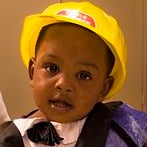
Crawling- Is it important??
Charlene Durham
For the first time in 20 years, the CDC has modified and updated their developmental milestones checklist. This checklist is typically used as part of a child’s regular well visits with their pediatrician to help identify those children with developmental delays. The previous milestone checklist was based on 50th percentile milestones (in other words, when 50% of children were expected to achieve the milestone at a certain age). The new updated checklist is based on when 75% or more of children are expected to achieve the milestone in question.
I bring this up because as part of the checklist revision, the motor skill of crawling has been eliminated and in conjunction with this, I have lately been asked by many families about the importance of crawling on hands and knees. This question of importance tends to be preceded by stories of other family members and children who never crawled and went straight to walking, or concerns that their child only moves in other ways, such as scooting on their bottom or army crawling.
In fact, there is no conclusive evidence that shows skipping crawling will have a negative impact on development and overall function. However, it is important to realize this does not mean there are no benefits to crawling, nor does it mean that crawling does not play an important role in development. As a pediatric PT for the past 20 years, I strive to have my patients achieve crawling on hands and knees, even if it is only for a short period of time. Why? Several reasons!
• Crawling promotes physical strength of core muscles by bringing and keeping tummy off the floor, of the shoulders by putting weight through the arms and hands, and of the legs by moving legs forward across the floor.
• Crawling requires coordination of the left and right sides of the body to work together; this is required for higher level skills including walking, running, climbing stairs, playing hopscotch, and holding a piece of paper with one hand while the other hand uses scissors to cut.
• Crawling facilitates hand-eye coordination (using your eyes to direct your muscles); this is required for future skills such as tying your shoes, throwing/catching/batting a ball, reading, and writing.
• Crawling works the small muscles of the hands by putting weight on them, which will help later with fine motor skills such as writing and tying shoes.
• Crawling assists in the development of binocular vision as your child looks down at their hands while crawling, then up into the distance to see where they are going; this forces your eyes to work together and adjust to distances. This is important for future skills such as catching a ball or driving a car.
• Crawling promotes problem-solving skills as a child maneuvers around objects and uses trial-and-error to reroute themselves to get to a desired object or toy.
So now that we know the benefits of crawling, how can you encourage your child to crawl? Here are some ideas:
• Tummy time, tummy time, tummy time!
• During floor time, spread toys out in an open area out of reach, and encourage child to crawl towards desired toy.
• Use a tunnel or cardboard box to play and encourage your child to crawl through.
• Get on your hands and knees and pretend to be a dog or cat and play chase with your child.
• Demonstrate crawling for your child or have older siblings demonstrate crawling.
As always, any questions or concerns you have regarding your child’s development should be brought to your pediatrician who may decide that a referral to a pediatric physical, occupational or speech therapist is warranted. If your child already has a PT, OT or SLP, it is important to keep the lines of communication open and discuss existing concerns or new concerns as they emerge – we are there to help both you and your child as he or she grows, develops, and becomes as functionally independent as possible!


